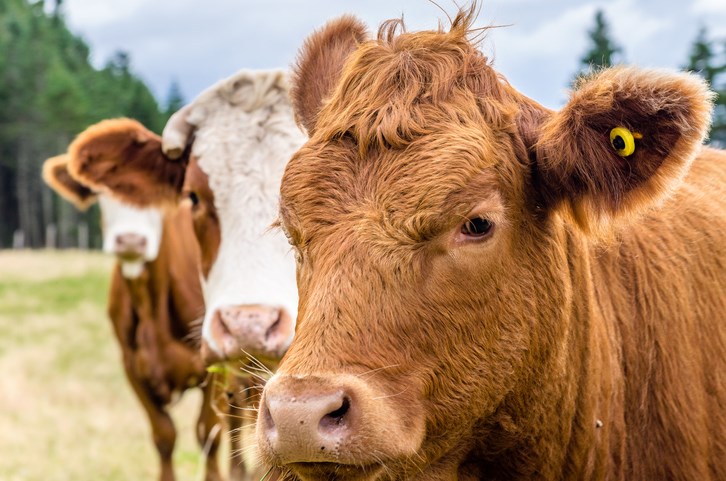In many parts of Western Canada, we have suffered through a significant drought this grazing season.
As well, in some areas we have seen some precipitation late in the summer and early fall, which has resulted in regrowth of forages on pasture.
These are ideal conditions for a potentially fatal condition known as fog fever, especially if cattle are suddenly moved from a dry and overgrazed pasture to a situation where there is unlimited access to lush regrowth.
Fog fever is one of the common names for a specific pneumonia of adult cattle, which is scientifically known as acute bovine pulmonary emphysema, or ABPE.
The scientific terminology gives a better description of this acute or sudden disease that causes an emphysema-like condition in the bovine lung.
A related condition occurs in feedlot cattle and is usually referred to as acute interstitial pneumonia, or AIP.
This disease was first described in grazing cattle more than 200 years ago in Europe. The occurrence was associated with the grazing of “fog lands,” which are pastures that have lush new growth after 小蓝视频 cut for haylage or silage. There is actually no link between the occurrence of this particular pneumonia and any particular atmospheric condition.
In North America, the syndrome is seen primarily in beef cows older than two years of age and is commonly associated with the movement of cattle in the fall from dry summer grazing to more lush green pastures.
It is a frustrating disease to deal with and it often occurs in an outbreak where anywhere from 10 to 50 percent of the herd may be affected.
The outbreak usually begins four to 10 days after moving cattle abruptly from dry and overgrazed pasture to a more lush pasture.
“Lush” is a difficult term to define and we don’t fully understand all of the risk factors associated with these outbreaks.
The syndrome has been seen in cattle 小蓝视频 moved from mountain grazing down to valleys late in the fall or in cows returning home to graze after 小蓝视频 at a community pasture.
In some cases, we may see regrowth on a pasture late in the fall in certain areas and we may see outbreaks without even moving cows.
The pneumonia that develops is unique and different from many of the other pneumonias that ranchers are familiar with.
Most pneumonic conditions are caused by bacteria or viruses and are more common in young and growing cattle. This respiratory syndrome is caused by a protein in the lush pasture called tryptophan and it typically only affects adult cows. When the cattle are exposed to a new pasture with higher levels of tryptophan and their rumen bacteria are not gradually adapted to this protein, it is converted by the bacteria in the rumen into a toxin known as 3-methyl-indole, which is circulated in the cow’s blood stream to the lungs.
Once the toxin reaches the lungs it causes severe cellular damage and the result is a severe, untreatable respiratory syndrome.
Clinical signs consist of a sudden onset of severe respiratory distress. The affected cows will have laboured breathing and often breathe with an open mouth. They will grunt forcibly on expiration and will develop froth around the mouth.
These cattle often appear to be anxious and are obviously having difficulty breathing, but they are not depressed in the way that cattle with bacterial pneumonias are.
The affected animals are reluctant to walk and don’t graze and in some cases they may go down and not be able to get up. The severe respiratory distress can actually cause pockets of air to accumulate under the skin of the animal. The animal’s temperature is often only slightly elevated.
Affected animals usually die within two to three days of the onset of symptoms and the mortality rate for affected cattle ranges from 30 to 100 percent.
The lungs from these cases are very large, heavy, swollen and full of fluid. They often have a marbled appearance and a rubbery or meaty texture.
Your veterinarian can often make a diagnosis based on the clinical signs of the disease and on the post-mortem findings.
The disease is especially frustrating because once it is diagnosed, there is little that can be done to prevent or treat further cases.
Producers should consider emergency slaughter or salvage for severe cases, although that is rarely possible.
Cattle should be moved with extreme caution. Moving cattle off of the pasture often causes so much stress to the affected animals that they die.
Moving the cattle after 小蓝视频 on the pasture for four days or more is of little value and it is unlikely to prevent any further cases.
Veterinarians often prescribe an anti-inflammatory medication to try to limit the inflammation and swelling in the lungs of affected animals, but the prognosis is often poor and treatment success is limited at best.
Fog fever is somewhat difficult to prevent because there are probably some risk factors that we haven’t yet identified. It would be wise to not move cattle abruptly from dry overgrazed pasture to lush pasture and try to make that transition more gradual.
Some other form of feed supplementation may help with that transition, and some method of limiting grazing time when moved to a new pasture may be beneficial, although this is often difficult to accomplish.
If the move to these new pastures can be delayed until after the first frost, there is much less likelihood that this severe condition will occur.
John Campbell is a professor in the department of Large Animal Clinical Sciences at the University of Saskatchewan’s Western College of Veterinary Medicine.





